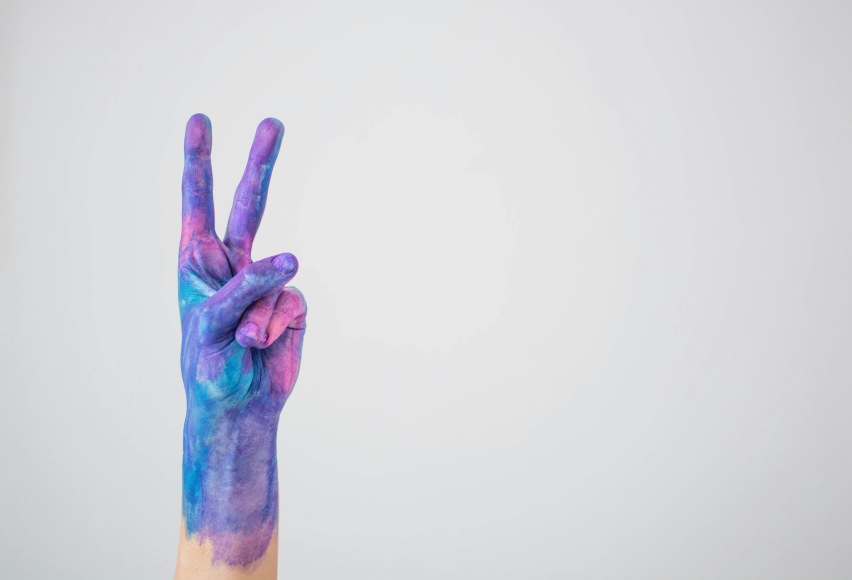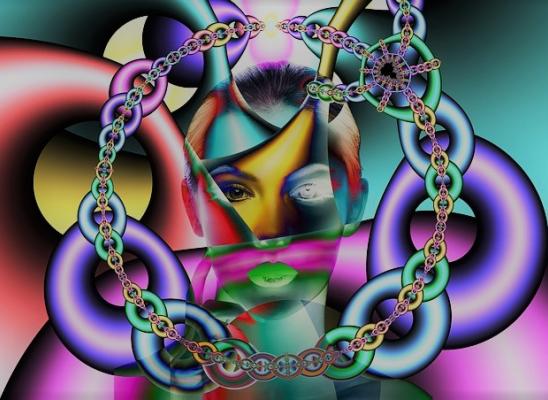Calling A Truce: How Befriending Your Hair Pulling Can Move You Towards Healing

Online test
Find out the severity of your symptoms with this free online test
If you’re living with trichotillomania, commonly referred to as “trich” or hair pulling, you might feel like you’re in a constant battle with your hair and your urges.
Pull! Don’t pull! Just pull it!
You resist as long as you can but end up pulling, left feeling defeated and frustrated. You vow to yourself you’ll do better next time, knowing the cycle is going to start all over again. It’s exhausting!
What if the key to managing your hair pulling wasn’t in fighting harder but fighting smarter…or maybe not fighting at all? That probably sounds scary and downright silly but think of it like this:
Imagine you’re trying to decide how to navigate a raging river. You might try just jump in and swim against the current. Chances are, you’ll just end up exhausted and right back where you started. What if, instead of fighting the current, you take time to study the river’s flow, learn its patterns, and find ways to navigate it or find calmer waters. You’ll still get where you want to go but without as much struggle.
The same idea applies when dealing with issues like hair pulling. By becoming aware of the triggers, emotions, and patterns behind your hair pulling, you can discover strategies to manage it more effectively rather than having to constantly battle it head-on. Here’s how.
Friend or Foe?
When you think of hair pulling as “the thing that’s ruining my life,” it becomes an “us vs. them” situation. You create an adversarial relationship with yourself. Every time you get the urge to pull, you brace for battle to try and resist. You go into “fix it” mode, just wanting to alleviate the distress and often, you end up being pretty hard on yourself. But the reality is, behind the pulling there’s a part of you that’s trying to help. It’s just in a way that doesn’t work very well.
Hair pulling is in part a coping mechanism. In the beginning, it might have brought relief from anxiety, a sense of control and calm during times of stress or even stimulation in moments of boredom. In that way, it served a purpose. And while it’s no longer helpful or healthy, its original intent still matters.
With this in mind, you can reframe how you view your pulling. Instead of anger or frustration, maybe you can ask why:
Why is the urge to pull showing up now?
What do I need right now?
The urge to pull isn’t random. It’s trying to tell you something if you’re open to listening.
Curiosity As A Bridge to Change
Befriending your hair pulling doesn’t mean giving up on healing. Rather, it means moving from a place of self-criticism to a place of understanding and self-compassion. When you ask yourself, “What do I need in this moment?” rather than, “Ugh! Why did I do that again?”, you’re building a bridge of understanding between behavior and awareness.
As you increase your awareness about your pulling, you can create strategies that align with your needs. For example, you might discover that you tend to pull when you’re tired or bored. Knowing that’s a trigger for you, it paves the way for responding instead of reacting. Remember that raging river? Like the flowing water that passes by, you can learn to be aware of but not react to urges. By not reacting, you open the path to finding ways to manage those feelings from a place of kindness and compassion. Many people living with trich have found healing by learning to practice this acceptance.
A specific type of therapy known as Acceptance and Commitment Therapy (ACT) can be a helpful approach. The goal of ACT is not to eliminate the distressing thoughts, feelings, or urges you might experience. Rather, ACT invites you to accept their presence and take actions that align with your values and goals. The urge to pull is merely a thought or a sensation. You don’t have to act on it. You don’t have to fight it either.
Imagine being able to say something like this:
“Hi urge. I feel you. I know you’re trying to tell me something. Let’s sit together for a moment and see what it is.” You’re acknowledging it, not fighting it. You’re giving yourself space and time to let it be. Approaching hair pulling from a position of acceptance using ACT has been shown effective in reducing pulling episodes.
Calling A Truce
Your recovery from hair pulling doesn’t have to be about fighting a constant battle. Recovery is about learning how to care for yourself in ways that are healthy and healing. Part of that is acknowledging that part of you that pulls and approaching it with curiosity, patience, and compassion. You are not broken. You developed a way to cope that might no longer serve you, but it came from a place of survival. When you honor that part of you, and turn towards that experience with kindness and compassion, you can step away from the fight and into healing.
Remember, acceptance doesn’t mean you’ve surrendered to the disorder. It simply means you’ve decided to stop fighting and start listening with curiosity and compassion.
Next Steps
If the idea of acceptance feels uncomfortable, that’s ok. Start by simply being gentle with yourself. Get curious. Take time to notice your urges without judgement. And if you’re open to support, consider reaching out to a therapist who is skilled in treating body-focused repetitive behaviors (BFRBs) like trich. You don’t have to do this alone. At Trichstop, we have therapists trained in evidence-based approaches like ACT who can help you navigate your healing journey and find the best strategies for your recovery. When you’re ready, our therapists are here.
References
1. Kelly, R. (2020, June 13). How I’m learning to cope with trichotillomania, or compulsive hair pulling. Latest news & breaking headlines | The Times and The Sunday Times. https://www.thetimes.com/life-style/health-fitness/article/how-im-learning-to-cope-with-trichotillomania-or-compulsive-hair-pulling-ghftxvkvc
2. Patterson, L. (2024, October 18). Resisting the pull: How I learned to live with trichotillomania. Medium. https://medium.com/@liam.patterson/resisting-the-pull-how-i-learned-to-live-with-trichotillomania-034d2c360a12
Online test
Find out the severity of your symptoms with this free online test
Start your journey with TrichStop
Take control of your life and find freedom from hair pulling through professional therapy and evidence-based behavioral techniques.
Start Now



